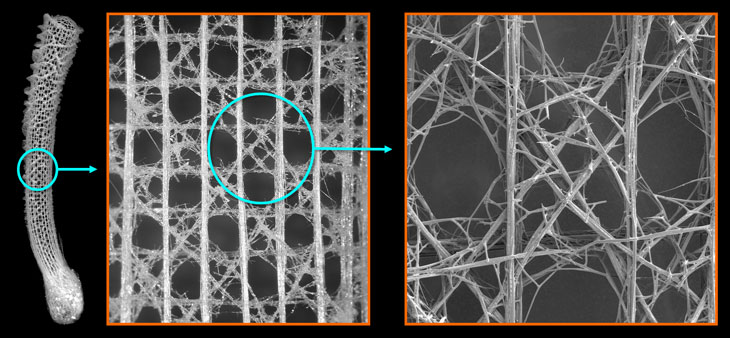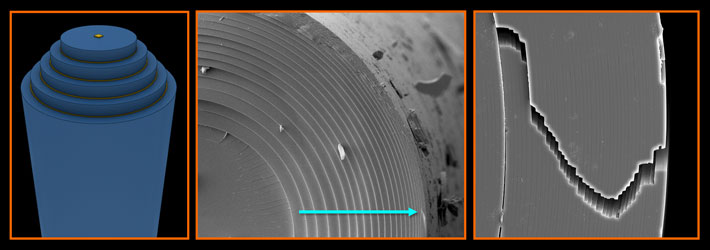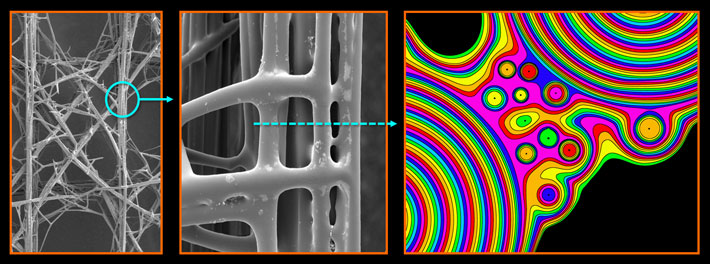A team of researchers from Harvard University has suggested that the construction industry can learn a thing or two from deep sea sponges found in the Pacific Ocean near the Philippines and Japan. Â
The sponges in question are called euplectella aspergillum, or more poetically, Venus’ flower baskets, and they produce elaborate skeletal systems of glass for themselves and the two symbiotic shrimps that live with them.

The Venus Flower Basket’s skeletal architecture
The sponges are able to extract silica acid from seawater and form it into microscopic six-pointed “spicules”, needle-like structures that are woven into an exoskeleton based on a diagonally reinforced latticework (pictured).  Â
What sponges can teach engineersÂ
Each of the load-bearing spicules exhibits a distinctive layered architecture, consisting of cylinders of silica separated by thin organic interlayers that radiate out from it.

Load bearing spicules from glass sponges exhibit a distinctive laminated architecture (left), a gradual reduction in silica layer thickness from the spicule core to its periphery (center), a design which is highly effective in slowing cracks (right)
The concentric cylinders decrease in thickness towards the outer periphery of the spicules, which are themselves surrounded by a layer of cement that rigidifies the entire structure. Â
Tests have shown that this layered design strategy significantly increases the toughness of each spicule and prevents the spread of cracks. As cracks travel though the composite, they do so in a step-like fashion, with the thinnest outer layers limiting the depth to which a newly formed crack can travel.

The Venus Flower Basket’s is surrounded by continuous layered silica cement, shown in both external (left and middle) and cross-sectional (right) views
The scientists have suggested that the structural principles obtained from this study could be used in the internal structure of high-strength beams, thereby creating lighter and stronger members for use in buildings and bridges.Â
Read more about the project here.






